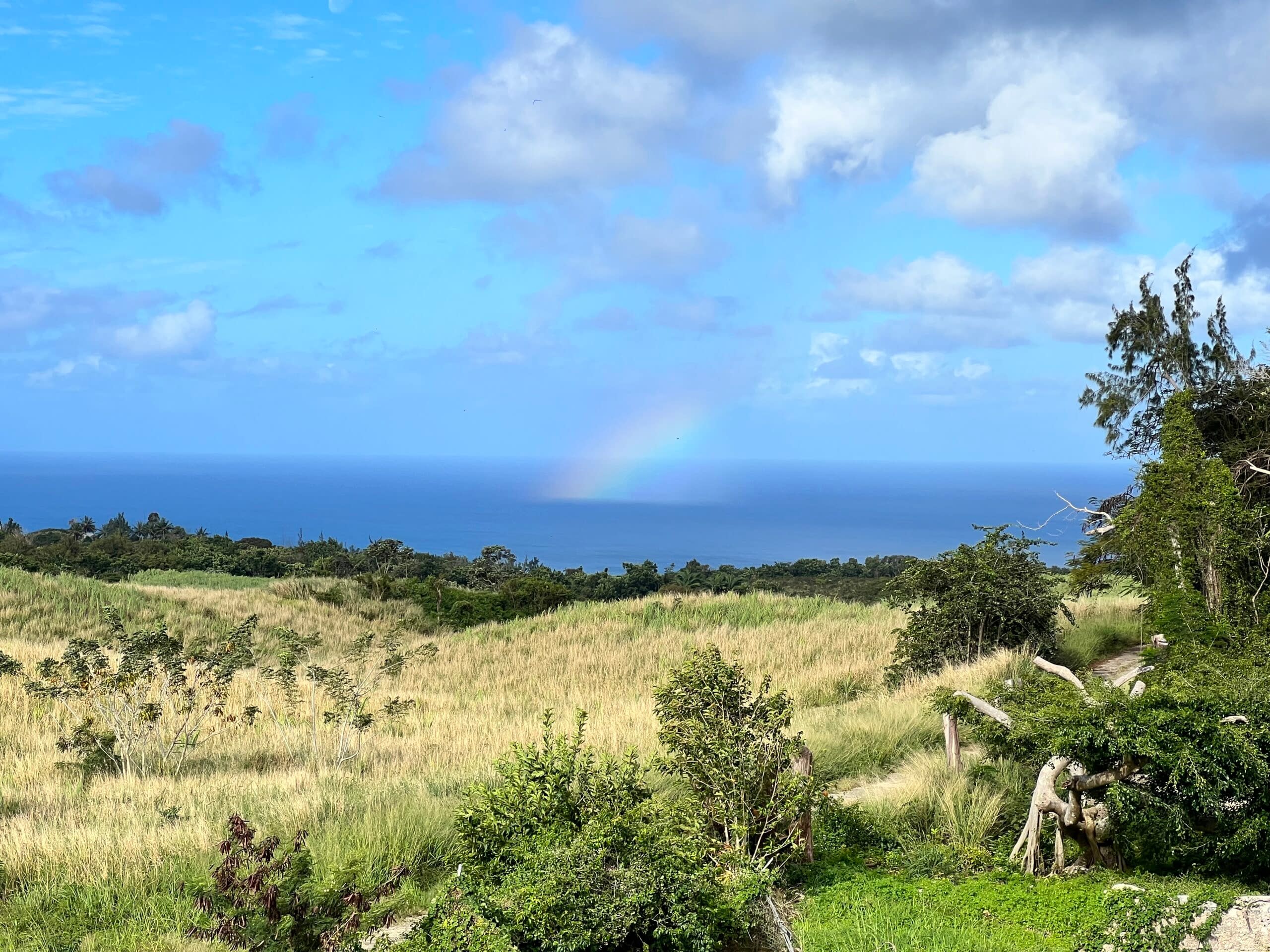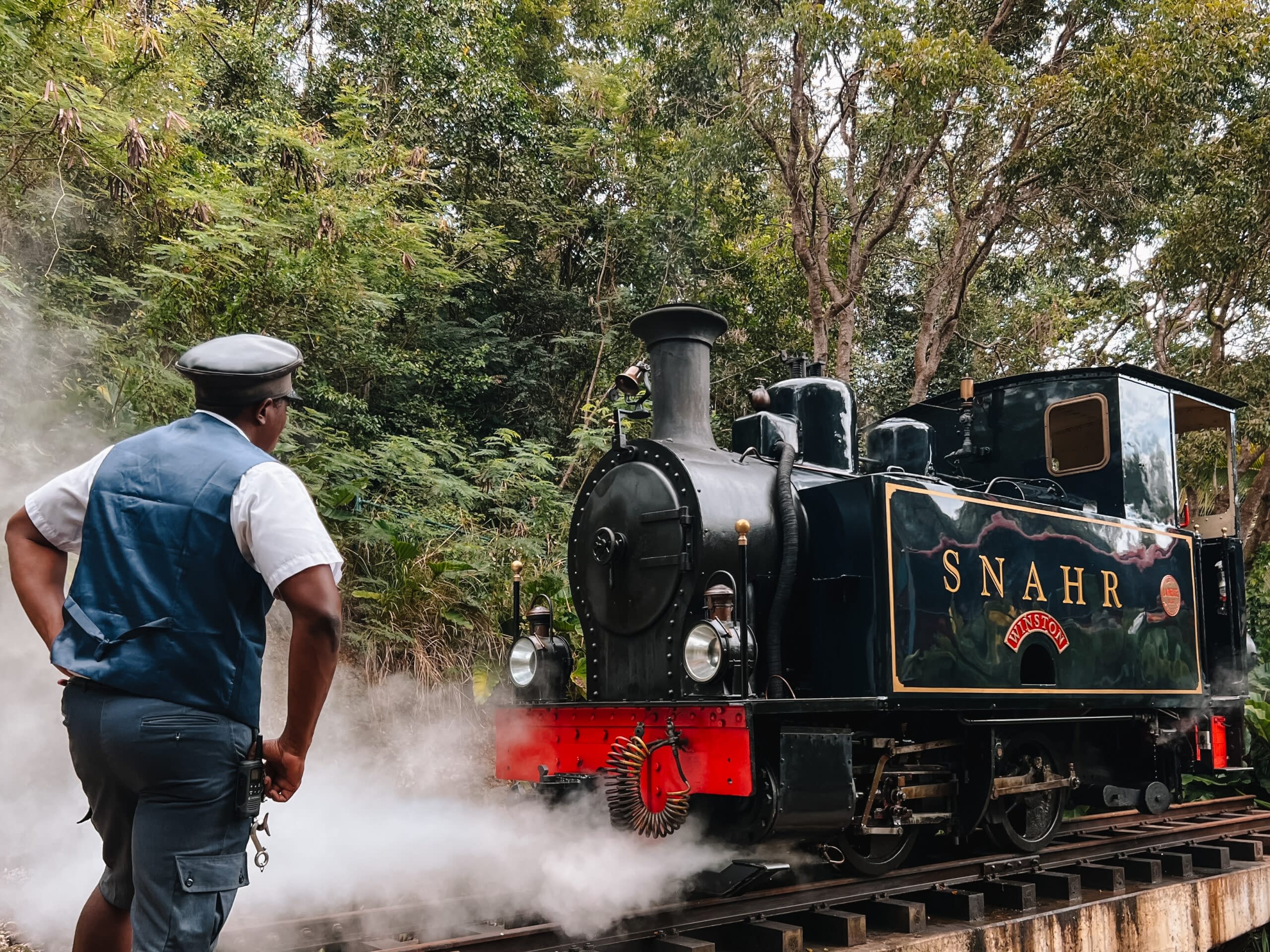Tales from St. Nicholas Abbey - part 1
As we boarded the plane headed for Barbados back in February, our knowledge of the Caribbean was limited at best. My narrow understanding of the many islands was based solely on tales of paradise beaches, reggae, and pirates. We decided to dive into history and explore the Caribbean cultural heritage
A new commodity
From the 16th to the 19th centuries, the Caribbean played an important role in European triangular trade. Jam-packed ships sailed back and forth between European ports, the west coast of Africa, and the New World. The expansion of the trade network and the import of resources from overseas colonies led to significant economic growth in Europe.
Sugar was a particularly popular commodity, and Barbados was one of the main producers. Since we fell asleep to the sound of rustling sugar cane each night, we decided to visit St. Nicholas Abbey. This grand estate is a sugar plantation as well as a museum and rum distillery.
The plantation was bought by the Warren family in 2006, who then initiated an extensive restoration of the 400-acres estate. They brought the plantation back into operation after about 60 years without production. Their wish is to preserve a part of Barbados’ cultural heritage and convey the island’s rich history.

An uncommon sight
We set out on the 5 km walk to St. Nicholas Abbey, which to the locals is a completely absurd distance to walk. We were repeatedly asked if we were lost on the way to the bus or if we needed a lift. However, we stubbornly chose to continue our journey to explore the local area.
The road took us past countless sugar cane fields ready to be harvested. We quickly learned that machetes are merely harvesting tools in Barbados, and it is quite normal to carry the formidable blades everywhere. However, it was hard not to look twice when machetes were carelessly tossed on the bar while the owners enjoyed a couple of icy ‘Banks’.
We mainly followed the map on our phones, but we still saw our chance to take a shortcut across a tomato field. Here we were surprised by a group of monkeys who were in the process of plundering the field for ripe tomatoes. They ran off as fast as lightning and hid in the trees, where they continued to monitor our every movement. I was a bit paranoid, as my last encounter with monkeys had resulted in a rabies vaccination.
Motivated by the increasing sound of a train whistle, we walked the last half kilometer to the sugar plantation. The surprised staff didn’t know what to do with visitors on foot. The place did not have an entrance for pedestrians, and we therefore had to wait politely in the car queue. When it was our turn, we were given a map of the property and two train tickets. We were informed about the tour schedule and the rendezvous was pointed out . However, one of us was only half-listening to the instructions while eagerly trying to catch a glimpse of the train platform.

The tracks of history
The original railway on Barbados was in operation from 1883 to 1937 and spanned 39 kilometers. The main purpose was to transport sugar from the plantations on the almost inaccessible east coast to the port in Bridgetown. The narrow track gauge of just 762 mm was cheap in production and allowed sharp turns in the hilly terrain. Combined with no fewer than 98 (!) railway bridges, the challenging landscape was just a minor hurdle.
The tracks not only led passengers through blood-curdling turns but also defied a 3% incline, which was carved into solid rock. An incline that gave the railway the title as the steepest in the world. It was no wonder that third-class passengers were asked to help push when the locomotive had to pull the heavily loaded train on the return journey.
The railway was a great success, but the narrow track gauge often let to instability, and the trains had a tendency to tip over, especially as a result of the whims of the trade winds. Moreover, maintenance was not prioritized, and the route turned into a veritable death trap. Repeated derailments, dysfunctional brakes, and dilapidated carriages dominated the railway’s final days. The operation was suspended, and the locomotives were retired.

“The track gauge is the distance between the two rails of a railway track. The standard gauge of 1435 mm is widely adopted in the majority of countries worldwide. The standardization of track gauges ensures smooth traffic, particularly across borders.”


St. Nicholas Abbey Heritage Railway
In 2019, the St. Nicholas Abbey Heritage Railway was inaugurated. The one and a half kilometer long railway takes passengers around the estate, while the train staff dressed in period uniforms create a living link to the past.
The railway is built according to the same specifications as its predecessor, and the train is powered by a restored steam locomotive. The locomotive even runs on the same type of fuel as it did in the past, and I’m not talking about coal, which was the traditional choice in Europe. In Barbados, they used bagasse, which is the fibrous leftovers from crushing sugar canes.
At the terminus at Cherry Tree Hill, we had a clear view of the rugged east coast and the waves of the Atlantic Ocean. Despite the name, there are no cherry trees today, as a previous plantation owner chose to replace them with mahogany. The strong and beautiful mahogany tree was widely used and exported to Europe, to such an extent that the trees are now protected from felling by the island’s legislation.
The beautiful nature had to admit defeat, when Rasmus was allowed to turn the locomotive on the turntable. His shining eyes spoke volumes, and when he was subsequently offered to try the train whistle, his excitement knew no bounds. With the recently turned locomotive, we were once again ready to depart.


The old mansion
On the platform, our guide was ready to show us around the plantation buildings. On our way to the great house, we were introduced to George the tortoise, who was steadily crossing the huge cricket pitch. Of course, no self-respecting British plantation would be complete without its own cricket field, because what could be more essential to a life of luxury and exploitation than a leisurely game of cricket?
There are only three remaining Jacobean mansions in the western hemisphere, and we stood in front of one of them. The Jacobean style represents the transition from the Renaissance to the Baroque in England. The architecture is characterized by symmetrical facades, casement windows, intricate wooden panels, and ornate chimneys complete with decorative fireplaces. The latter, although entirely unnecessary in these tropical latitudes, served as a mere display of extravagant wealth.
Another symbol of wealth – and laziness – is the so-called Gentleman’s Chair. In the mansion’s living room stood a prime example of an armchair. The winged chair had a fixed footstool, and the backrest could be reclined to horizontal with a single push of a button. In addition, the chair was equipped with an adjustable table, book holder, and reading lamp. In short, there was no need for the master of the house to leave the chair, unless he needed to go to the bathroom. If this were the case, the chair, designed with mobility in mind, could be comfortably wheeled off to the loo.
The plantation owners and their families undoubtedly lived a life of luxury, which only highlights the injustice of how they achieved their wealth. The beautiful exterior is indeed built on a rotten foundation of blood, sweat, and tears.
